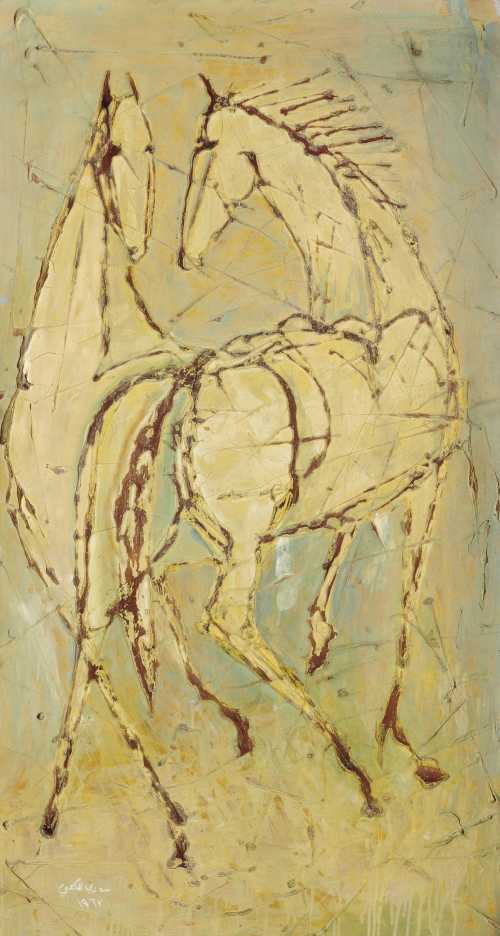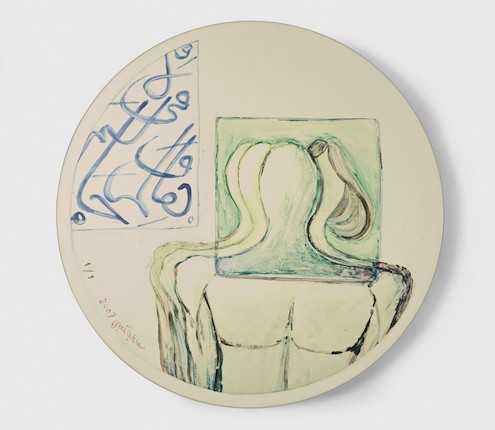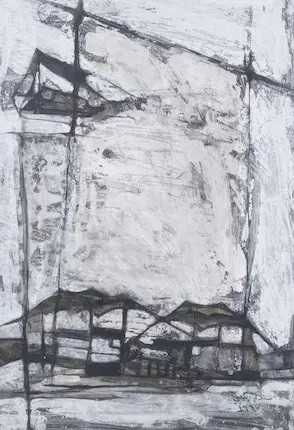- Two Horses 1962
- oil and encaustic on canvas
- Painting
- 50 * 91.4 cm
- signed and dated in Arabic (lower left)
20 October 2021
Estimation
£6,000
8,290 USD
-
£8,000
11,053 USD
Realized Price
£6,875
9,498 USD
1.786%
Artwork Description
Text by Dr Ahmed Naji, independent researcher and cultural advisor on art in Iraq and the Arab world
Born in Najaf, Iraq in 1937, Saadi Al-Kaabi is recognised for a distinctive style often found in large scale canvases and murals. A style that he honed and perfected over many years of experimentation and self-evaluation following his graduation from Baghdad’s Institute of Fine Arts in 1960. After graduation, Al-Kaabi, with a desire to depart from realism and with the encouragement of his teachers at the Institute, experimented with different styles and themes. Such experimentation was a gradual process based on innovation and expressing the Iraqi identity in art. According to Al-Kaabi, the Iraqi identity expressed in art is derived from Iraqi cultural heritage, the artist’s locality, his culture and future vision.
Al-Kaabi sought to perfect his artistic tools by experimenting between cubism, expressionism and abstract expressionism in the first decade of his career whilst participating in group exhibitions as a member of the Iraqi Impressionists Group, founded by Hafidh Al-Droubi. In 1964, Al-Kaabi participated with this painting in the Iraqi Impressionists Group exhibition at the Gulbenkian Building (National Museum of Modern Art) in Baghdad along with Hafidh Al-Droubi, Ala Bashir, Ghazi Al-Saudi and others.
This painting in the Parker Collection is an example of Al-Kaabi’s early experimentation in addition to it leading to the ‘Desert Period’ in his oeuvre. Al-Kaabi’s attempt to abstract the horses is coupled with a technical style emphasising the outline texturally while maintaining a harmonious earthen muted atmosphere. The outline was achieved by using plastic after which oil colours were applied. The style and techniques gradually culminated in a distinctive formula combining all the above-mentioned prerequisites of the Iraqi identity in the artwork. Al-Kaabi’s abstract figures maintain a palpable presence in the painting achieved by the prominent outline which has a bas-relief sculptural quality alluding to the Assyrian wall reliefs however adopting the line instead of the form.
Al-Kaabi recalls the period between 1960-1965 (the years the Parker family were in Baghdad) as a culturally active period. Foreign dignitaries and expats used to regularly visit art exhibitions in Baghdad as well as the upper middle class of Iraqi society and the atmosphere at the time encouraged innovation and dialogue. In 1966, Al-Kaabi took a new role in the neighbouring Kingdom of Saudi Arabia as the Head of the Plastic Arts Department at the Institute of Artistic Education in Riyadh. He served in this role for four years, training generations of Saudi artists whom he recently re-connected with during a group exhibition in Riyadh in 2020. He was also elected as president of the Iraqi Artists Society between 1986-1990. Amongst the notable public artworks by Al-Kaabi is a large mural in Baghdad International Airport, a mural at Babel Oprawi Hotel in Baghad and a large mural titled ‘Message from Mesopotamia’ 2001 at the UNESCO headquarters in Paris, France.
Dr Ahmed Naji is the author of Under the Palm Trees: Modern Iraqi Art with Mohamed Makiya and Jewad Selim, Rizzoli New York, 2019. (Instagram: Ahmednaji_Al Said)
Born in Najaf, Iraq in 1937, Saadi Al-Kaabi is recognised for a distinctive style often found in large scale canvases and murals. A style that he honed and perfected over many years of experimentation and self-evaluation following his graduation from Baghdad’s Institute of Fine Arts in 1960. After graduation, Al-Kaabi, with a desire to depart from realism and with the encouragement of his teachers at the Institute, experimented with different styles and themes. Such experimentation was a gradual process based on innovation and expressing the Iraqi identity in art. According to Al-Kaabi, the Iraqi identity expressed in art is derived from Iraqi cultural heritage, the artist’s locality, his culture and future vision.
Al-Kaabi sought to perfect his artistic tools by experimenting between cubism, expressionism and abstract expressionism in the first decade of his career whilst participating in group exhibitions as a member of the Iraqi Impressionists Group, founded by Hafidh Al-Droubi. In 1964, Al-Kaabi participated with this painting in the Iraqi Impressionists Group exhibition at the Gulbenkian Building (National Museum of Modern Art) in Baghdad along with Hafidh Al-Droubi, Ala Bashir, Ghazi Al-Saudi and others.
This painting in the Parker Collection is an example of Al-Kaabi’s early experimentation in addition to it leading to the ‘Desert Period’ in his oeuvre. Al-Kaabi’s attempt to abstract the horses is coupled with a technical style emphasising the outline texturally while maintaining a harmonious earthen muted atmosphere. The outline was achieved by using plastic after which oil colours were applied. The style and techniques gradually culminated in a distinctive formula combining all the above-mentioned prerequisites of the Iraqi identity in the artwork. Al-Kaabi’s abstract figures maintain a palpable presence in the painting achieved by the prominent outline which has a bas-relief sculptural quality alluding to the Assyrian wall reliefs however adopting the line instead of the form.
Al-Kaabi recalls the period between 1960-1965 (the years the Parker family were in Baghdad) as a culturally active period. Foreign dignitaries and expats used to regularly visit art exhibitions in Baghdad as well as the upper middle class of Iraqi society and the atmosphere at the time encouraged innovation and dialogue. In 1966, Al-Kaabi took a new role in the neighbouring Kingdom of Saudi Arabia as the Head of the Plastic Arts Department at the Institute of Artistic Education in Riyadh. He served in this role for four years, training generations of Saudi artists whom he recently re-connected with during a group exhibition in Riyadh in 2020. He was also elected as president of the Iraqi Artists Society between 1986-1990. Amongst the notable public artworks by Al-Kaabi is a large mural in Baghdad International Airport, a mural at Babel Oprawi Hotel in Baghad and a large mural titled ‘Message from Mesopotamia’ 2001 at the UNESCO headquarters in Paris, France.
Dr Ahmed Naji is the author of Under the Palm Trees: Modern Iraqi Art with Mohamed Makiya and Jewad Selim, Rizzoli New York, 2019. (Instagram: Ahmednaji_Al Said)
More lots by Saadi Al-Kaabi
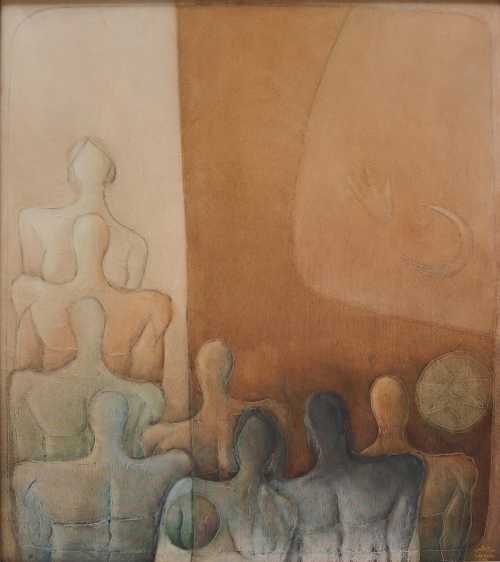
Untitled (Human Forms)
Realized Price
18,585 USD
Min Estimate
7,706 USD
Max Estimate
11,402 USD
Average Artwork Worth
+81.483%
Average Growth of Artwork Worth
Sales Performance Against Estimates
Average & Median Sold Lot Value
2020 - 2024
Performance vs. Estimate
2020 - 2024
Sell-through Rate
2020 - 2024
Similar Artworks

New Normal
Estimation
$15,000
-
$20,000
Realized Price
$10,160
41.943%
Sell at
Sale Date
Phillips Auction
-
16 July 2025
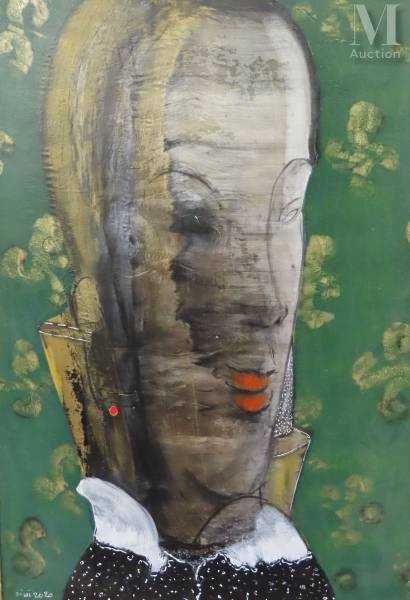
Portrait from the Monumental Faces Series
Estimation
€7,000
7,527 USD
-
€10,000
10,753 USD
Realized Price
€8,000
8,602 USD
5.882%
Sell at
Sale Date
Millon & Associés
-
24 May 2023
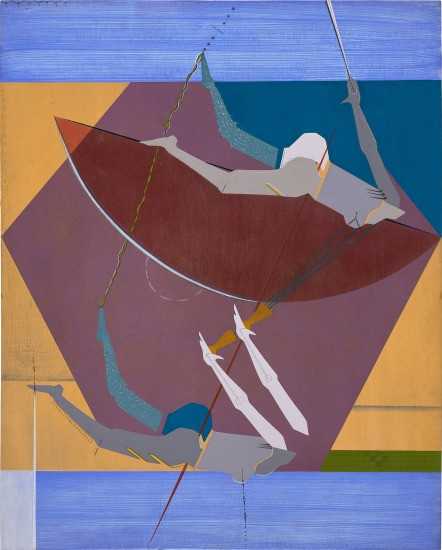
Strangers From Right to Left #3
Estimation
$8,000
-
$12,000
Realized Price
$8,255
17.45%
Sell at
Sale Date
Phillips Auction
-
27 September 2023
